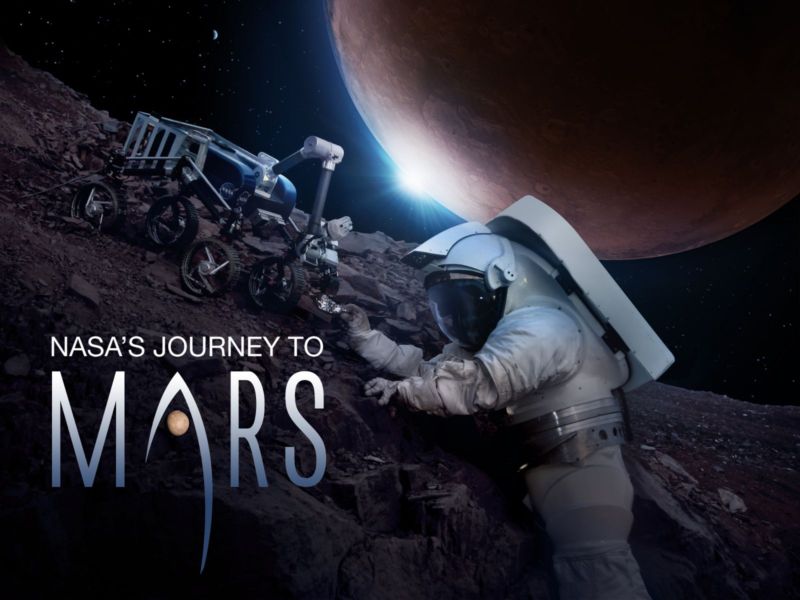
NASA has been talking about its "Journey to Mars" for the better part of this decade now, along with its plans to send humans to the Martian system in the 2030s. One thing the space agency hasn't done, however, is talk too much about costs. From experience, the agency has learned the woes of giving Congress "sticker shock" when it comes to exploration programs.
However, a new report by NASA's inspector general chastises the agency for not doing so earlier. "Such estimates would help inform other decision makers and stakeholders in the Administration, Congress, and research and business communities of the magnitude of the sustained investment required to make human exploration of Mars a reality by the late 2030s or early 2040s," the report states.
The report also attempts to provide such a cost estimate based on an updated version of a study done by NASA's Jet Propulsion Laboratory. This analysis budgeted for a crewed landing on the Martian moon Phobos in 2033, a one-month Mars surface stay in 2037, and one-year surface stays in 2041 and 2046. The updated cost: $450 billion over the next three decades.
An “austere” plan
The inspector general notes that even this large estimate would be for an "austere," bare-bones program that would make no allowance for future missions. Essentially, the missions would be launched as one-off flights, with the architecture limited to system capabilities needed only for initial missions. The problem with this is that such planning would include little technology development needed for a long-term, sustainable exploration program. NASA would be going for "flags and footprints," as during the Apollo era, rather than going to stay.
Notably, there are "fundamental differences" between the bare-bones cost estimate and the kinds of plans NASA has been talking about for going to Mars. For example, instead of developing methane propulsion and producing fuels on Mars for the ascent vehicle—living off the land, as NASA talks about—the cost estimate relies on hypergolic chemical propulsion to transport crewed missions to Mars orbit and to and from the Mars surface. The $450 billion cost estimate also assumes that NASA will end support for the International Space Station in 2024, while the agency has indicated it wants to keep ISS aloft for four years beyond that.
The new report also raises a number of other concerns about NASA's deep-space plans. The agency is "not likely" to meet its targets for launching the first two missions of the Space Launch System rocket and Orion spacecraft in 2018 and 2021, the report notes, due to a host of technical issues. There is not enough detail about exploration missions in the mid-2020s to make reasonable cost estimates. And so on.
Finally, the inspector general praises the agency for seeking cost reductions through commercial programs, such as cargo resupply to the International Space Station. The report notes, too, that whereas costs of a single Space Launch System rocket launch will exceed $1 billion, "private launch vehicles may provide a cost-effective means of transporting certain payloads to low Earth and cislunar orbit as part of the Agency’s Journey to Mars." However NASA has yet to formally include rockets other than the Space Launch System into its deep-space planning.
reader comments
214